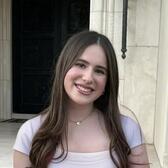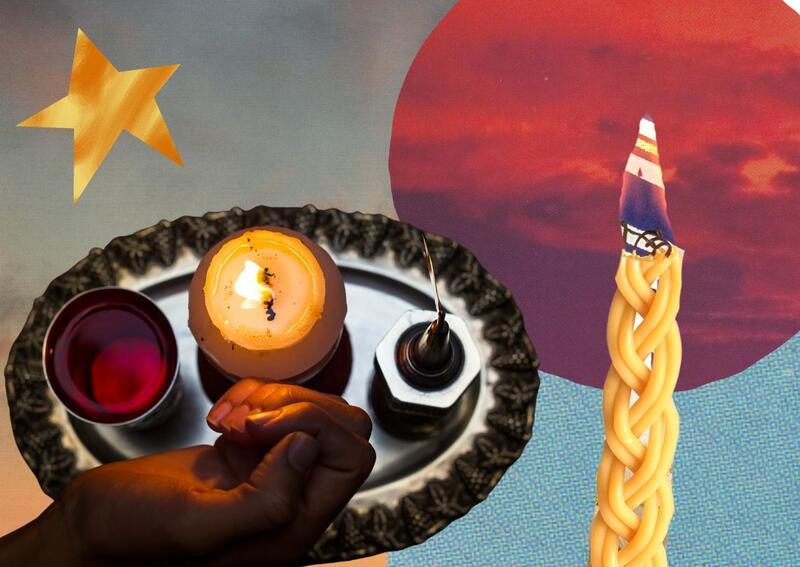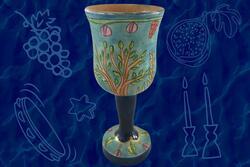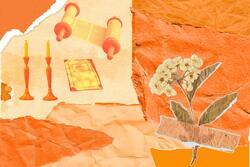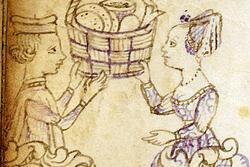Braiding My Identity Through Havdalah
I weave hands with my two sisters as we begin the beautiful and multisensory experience that is Havdalah. The rich smell of cinnamon wafts through the air while we hold our fingers close to the braided candle and feel the heat radiating from the flame. My eyes follow the wax droplets as they travel from the candle to the wax plate below, filled with vibrant paintings of Jerusalem, the Western Wall, and the skyline of Israel. When we finish saying the prayers, my father promptly turns on his phone and blasts the song “Geshmak To Be A Yid” by Moshe Storch. My family dances around the kitchen table to the tune and thanks G-d for the week that has passed and the week that is to come.
The Havdalah ceremony, which is derived from the Hebrew word “to separate,” marks the end of Shabbat and the beginning of a new week. Throughout the ritual, Havdalah incorporates each of the five senses. We hold the wine cup, smell the besamim (spices), see the flame, hear the blessings, and taste the wine. Each of these components work in unison, engendering the transition from the spiritual and holy Shabbat experience to the upcoming work week.
In many communities, a bar or bat mitzvah will read from the Torah and spend weeks, or even months, preparing for this monumental occasion. I grew up in a Modern Orthodox community, however, so when it came time for my bat mitzvah, I knew I would not be reading from the Torah. Still driven to make this bat mitzvah meaningful in my own way, I chose instead to lead a Havdalah service at my Saturday night party.
I devoted the months leading up to my bat mitzvah rehearsing, studying, and analyzing the Hebrew Havdalah service prayers. I learned about the story of the prophet Elijah, the neshama yetera (the additional soul that every Jew receives during Shabbat) and the various meanings and symbolism behind each component of the service. While I poured over the commentaries and translations of the Havdalah prayers, I began to notice similarities between the service and my own life.
Just as the Havdalah ceremony marks the transition from Shabbat to the work week, my bat mitzvah ceremony would mark my transition from childhood to adulthood. Although I was initially eager and enthusiastic to begin my new life as a Jewish woman, as I approached this momentous occasion, I realized that becoming a bat mitzvah meant more than just a joyous weekend and myriad gifts—it meant new obligations and restrictions in my Jewish life. After becoming a bat mitzvah, I would no longer be allowed to pray with my father on the men’s side of the synagogue, I would be expected to maintain full kashrut, and I would have to cover my hair after I went to the chuppah - suddenly I felt the increasing, heavy weight of religious Jewish adulthood. Moreover, I grew concerned about how my differing identities would come into play. Would I be able to braid my feminist values with my Jewish observance?
A few weeks before my bat mitzvah, I read an article highlighting the significance of the Havdalah service: it serves as a meaningful way to reflect on the blessings of the week passed while simultaneously allowing us to transition into a new week, brimming with new possibilities. As I read this speech, my perspective toward my upcoming bat mitzvah began to shift. This pivotal transition in my life, which I was initially worried would become a constrictive burden, in fact, provided the structure and means to guide my growth as a Jewish woman. In entering this chapter in my Jewish life, a new world of possibilities emerged. As a bat mitzvah, I could light Havdalah and Shabbat candles, make Kiddush and other blessings on behalf of others, and so much more—each opportunity served as a new potential avenue to strengthen my connection with G-d.
After reading this article, I added a new element to my bat mitzvah studies. I learned all about the new mitzvot (commandments) that I could take on as a Jewish woman.
So, when I stood in front of my loved ones at my bat mitzvah party, I grasped the beautiful and braided Havdalah candle close to my heart and relished the new path ahead of me. Just as the Havdalah service requires participation from each of the senses, I realized that each of my identities– a Jew, a daughter, a woman, a sister, and a feminist– would be integral as I entered Jewish adulthood. These identities, as I have come to learn, do not contradict one another, but instead, like cinnamon in challah dough, make the sum of their parts all the sweeter.
Today, when I hold the havdalah candle on Saturday night and dance around the kitchen table to “Geshmak to be a Yid,” I am reminded of the growth and connection to G-d that being a bat mitzvah has allowed me to accomplish. Accepting the responsibility of Jewish womanhood does not entail relinquishing my right to doubt. I can remain a Modern Orthodox woman while still questioning G-d. I can follow a strict regimen of practices while continuing to find ways to express my individuality, femininity, and Judaism. Just like the weekdays and shabbat, my identities are distinct and separate strands, but they are most beautiful when they are braided together.
This piece was written as part of JWA’s Rising Voices Fellowship.

